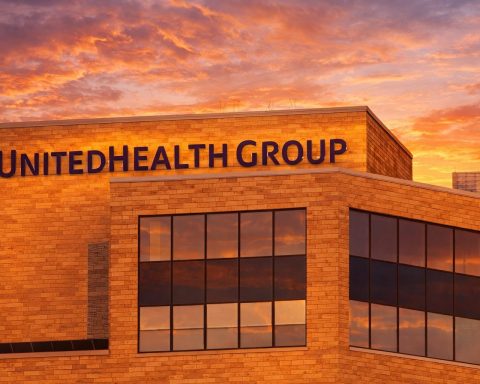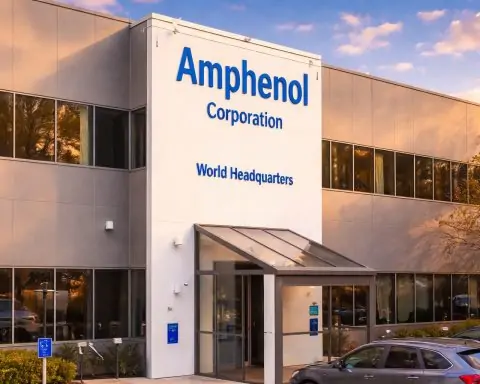- Wegovy (semaglutide) received FDA accelerated approval to treat metabolic dysfunction-associated steatohepatitis (MASH), becoming the first GLP-1 therapy cleared for MASH in a patient population estimated at about 5% of U.S. adults, based on part 1 of an ongoing trial showing liver health improvement.
- Tonix Pharmaceuticals’ Tonmya, or TNX-102 SL, was approved August 15 for fibromyalgia, the first new fibromyalgia therapy in 15 years, with two Phase 3 trials showing significantly reduced daily pain versus placebo at 14 weeks and a potential peak U.S. sales of about $800 million.
- Pfizer’s inclacumab, a P-selectin inhibitor acquired via the 2022 $5.4 billion Global Blood Therapeutics deal, failed in a Phase 3 sickle cell trial to reduce vaso-occlusive crises, and Oxbryta was withdrawn from the market in 2024, making the previously projected $3 billion in revenue unlikely.
- BioNTech agreed to acquire CureVac in an all-stock deal valued at about $1.25 billion, uniting two German mRNA rivals to form a broader mRNA therapeutics platform, with the transaction expected to close by end of 2025 and to dismiss patent disputes with Pfizer/BioNTech as part of the deal.
- Eli Lilly announced a $1.3 billion AI-driven drug discovery partnership with Superluminal Medicines to design small molecules targeting GPCRs involved in obesity and cardiometabolic disease, with Lilly obtaining exclusive rights to successful compounds.
- PAHO reported a 34-fold increase in measles cases across the Americas as of August 8, with more than 10,100 cases and 18 deaths in 10 countries, 71% of cases occurring in unvaccinated individuals and most fatalities in Mexico.
- German researchers at DZNE and LMU Munich found brain immune cells may attack odor-sensing neurons, providing a mechanism for early smell loss in preclinical Alzheimer’s disease, with findings published August 15.
- Cardiff University-led exome sequencing identified eight new schizophrenia risk genes in a study analyzing about 28,900 patients, 103,000 controls, and 3,400 families, including STAG1 and ZNF136 with strong evidence and SLC6A1 and KLC1 identified through missense mutations.
- Eli Lilly’s tirzepatide (Mounjaro) has shown promise in MASH in mid-stage trials.
- U.S. CDC issued travel notices for chikungunya amid rising outbreaks across Africa (Kenya, Somalia, Madagascar), Asia (Sri Lanka), and Latin America (Bolivia) as of mid-August.
For the period August 15–16, 2025, the biotech, pharma, medical, and health sectors saw a flurry of significant developments worldwide. Here is a comprehensive roundup of the top stories, categorized by theme and featuring expert insights and source links:
Wegovy Wins FDA Nod for Fatty Liver Disease (MASH)
Novo Nordisk’s blockbuster weight-loss drug Wegovy (semaglutide) received accelerated approval from the U.S. FDA to treat metabolic dysfunction-associated steatohepatitis (MASH), a serious fatty liver disease [1]. This makes Wegovy the first GLP-1 class therapy cleared for MASH, an ailment affecting roughly 5% of U.S. adults [2]. The decision was based on part 1 of an ongoing trial showing Wegovy improved liver health and scarring in more patients than placebo [3]. “There really [have] not been good treatments in this space… we really need better medications that… prevent the progression of the disease,” said Jason Brett, Novo Nordisk’s U.S. medical chief [4]. Novo is pursuing approvals in Europe and Japan based on these interim results [5], potentially strengthening its lead in metabolic diseases. Rival Eli Lilly’s tirzepatide (Mounjaro) has also shown promise in MASH in mid-stage trials [6], underscoring the high-stakes race in this therapeutic area.
Tonix’s Tonmya Approved – First New Fibromyalgia Drug in 15 Years
Patients with fibromyalgia – a chronic condition causing widespread pain, fatigue, and sleep issues – got a new treatment option as the FDA approved Tonix Pharmaceuticals’ TNX-102 SL, branded Tonmya, on Aug. 15 [7]. Tonmya is the first new fibromyalgia therapy in over 15 years, [8] offering a non-opioid, bedtime formulation of cyclobenzaprine designed to improve non-restorative sleep and reduce pain [9]. “This is the first time that a drug has been developed to target the non-restorative sleep, which we think plays an important role in fibromyalgia,” explained Seth Lederman, Tonix’s CEO [10]. In two Phase 3 trials, Tonmya significantly reduced daily pain vs. placebo at 14 weeks [11]. Experts say new options are sorely needed: “At present, there is room for more treatment options… [current] medication options have limited effectiveness,” noted Dr. Syed Alam, a rheumatology specialist [12]. Analysts estimate Tonmya’s peak U.S. sales could reach $800 million in coming years [13], highlighting the market opportunity in a condition long misunderstood and in need of better therapies.
Pfizer’s Sickle Cell Drug Fails Phase 3 Trial
Pfizer suffered a setback in its quest to tackle sickle cell disease. The company announced that inclacumab, a P-selectin inhibitor it acquired via the $5.4 billion takeover of Global Blood Therapeutics (GBT) in 2022, failed to meet the primary endpoint in a Phase 3 trial [14] [15]. The late-stage study in patients ≥16 years old showed no significant reduction in vaso-occlusive crises (painful sickle cell episodes) compared to placebo, [16] prompting disappointment from the company. This is the second blow from the GBT acquisition – Pfizer had already withdrawn GBT’s drug Oxbryta from the market in 2024 due to safety concerns [17]. “Pfizer’s acquisition of Global Blood has proven disappointing with inclacumab’s failure coming after Oxbryta’s 2024 withdrawal… The previously estimated $3 billion in revenue… now seems unlikely to materialize,” remarked Evan Seigerman, an analyst at BMO Capital Markets [18]. Pfizer said it remains committed to supporting the sickle cell community and will continue working on other therapies from the GBT deal [19], including gene-targeted treatments recently approved (such as Vertex/CRISPR’s Casgevy and Bluebird Bio’s gene therapy) [20]. The news underscores the challenges in developing effective sickle cell drugs and puts pressure on Pfizer to deliver results from its remaining pipeline in this area.
BioNTech to Acquire CureVac, Creating mRNA Powerhouse
In a major biotech merger, Germany’s mRNA vaccine pioneers BioNTech and CureVac are set to unite. On Aug. 15, CureVac announced a definitive agreement under which BioNTech will acquire all outstanding shares of CureVac, [21] effectively merging two highly complementary companies in the mRNA therapeutics space. “By entering into a definitive purchase agreement with BioNTech, we intend to unite two highly complementary German companies… Together, we believe we can deliver significant benefits to patients with mRNA-based immunotherapies and realize our full potential in a combined company,” said Dr. Alexander Zehnder, CureVac’s CEO [22]. The all-stock deal, reportedly worth about $1.25 billion, will also resolve ongoing patent litigation – CureVac and partner GSK agreed to dismiss their mRNA vaccine patent disputes with Pfizer/BioNTech as part of the transaction [23]. Analysts note that combining BioNTech’s and CureVac’s scientific teams “can create significant opportunities across [their] collective research, development and manufacturing platforms, while establishing the combined company as a global leader in mRNA-based medicines” [24]. The deal, expected to close by end of 2025 pending approvals, marks a consolidation among COVID-19 vaccine rivals and could accelerate development of new mRNA-based treatments for cancer and infectious diseases.
Eli Lilly Strikes $1.3 Billion AI Drug Discovery Partnership
Eli Lilly announced a high-profile collaboration aimed at leveraging artificial intelligence for drug discovery. The pharma giant is partnering with Superluminal Medicines, a biotech specializing in AI-driven small molecule design, in a deal that could be worth up to $1.3 billion to Superluminal [25] [26] if milestones are met. The alliance will use Superluminal’s platform – which integrates structural biology, machine learning, and pharmacokinetic modeling – to develop small-molecule therapies targeting certain G-protein coupled receptors (GPCRs) implicated in obesity and cardiometabolic diseases [27] [28]. Under the agreement, Lilly gains exclusive rights to any successful compounds, reflecting big pharma’s growing interest in AI-enabled drug discovery [29]. “Our collaboration with Lilly is a defining moment for Superluminal… Together, we aim to develop next-generation medicines that address the urgent and growing global burden of cardiometabolic disease,” said Cony D’Cruz, Superluminal’s CEO, adding that the partnership validates the power of their AI platform to tackle historically intractable targets [30]. This deal follows a broader industry trend of major companies investing in AI and computational chemistry startups to boost R&D productivity. It also comes as Lilly seeks to expand its pipeline in metabolic disorders, on the heels of its success with diabetes and obesity drugs.
PAHO Warns of Deadly Measles Outbreak in the Americas
A measles outbreak is rapidly worsening in the Americas, prompting public health advisories. The Pan American Health Organization (PAHO) reported a 34-fold increase in measles cases in the region compared to the same period last year [31]. As of August 8, over 10,100 cases and 18 deaths have been confirmed across 10 countries, with the majority of fatalities in Mexico (14 deaths) and additional deaths in the U.S. (3) and Canada (1) [32]. PAHO attributes the outbreaks to alarmingly low vaccination coverage, noting that 71% of cases occurred in unvaccinated individuals [33]. “Measles is preventable with two doses of a vaccine… To stop these outbreaks, countries must urgently strengthen routine immunization and conduct targeted vaccination campaigns in high-risk communities,” urged Daniel Salas, head of immunization at PAHO [34]. Most victims in Mexico have been unvaccinated Indigenous people, illustrating the consequences of immunity gaps [35]. Measles is highly contagious and can spread “rapidly among unvaccinated people, especially children,” PAHO warned [36]. Health authorities in North America are now racing to boost vaccination rates amid this surge. In parallel, the U.S. CDC issued travel notices about chikungunya – another virus on the rise – noting outbreaks of this mosquito-borne illness across parts of Africa (Kenya, Somalia, Madagascar), Asia (Sri Lanka), and Latin America (Bolivia) as of mid-August [37] [38]. These developments underscore the importance of global vigilance in public health and routine immunization to prevent deadly disease resurgences.
Immune Response Explains Early Smell Loss in Alzheimer’s
New scientific findings are shedding light on one of the early mysteries of Alzheimer’s disease – the loss of the sense of smell. Researchers in Germany (at DZNE and LMU Munich) reported evidence that the brain’s own immune cells may inadvertently attack odor-sensing nerve fibers in the nose/olfactory system, contributing to smell loss in the preclinical stages of Alzheimer’s [39] [40]. In a study published August 15, the team found that inflammation-related immune activity can damage the neuronal connections needed for odor perception, often years before cognitive symptoms like memory loss emerge [41]. This provides a mechanistic explanation for why a fading sense of smell is a well-known early warning sign of Alzheimer’s. The discovery offers new insight into disease onset: changes in smell could be a red flag that neurodegeneration is underway due to “immune system [attacks on] neuronal fibers essential for odor perception,” potentially giving clinicians a window for early intervention [42]. Experts say this research “highlights how changes in the sense of smell could serve as an early indicator of Alzheimer’s” and might lead to novel diagnostic strategies [43]. While more work is needed, the findings open the door to exploring treatments that modulate the brain’s immune response to delay Alzheimer’s progression at its asymptomatic stages.
Largest Gene Study Finds 8 New Schizophrenia Risk Genes
An international research collaboration has identified eight new genes associated with schizophrenia, thanks to the largest exome-sequencing study of the disorder ever conducted [44] [45]. Scientists at Cardiff University’s Centre for Neuropsychiatric Genetics and Genomics led the study, which analyzed DNA from ~28,900 schizophrenia patients, 103,000 controls, and 3,400 families affected by the illness [46]. The analysis of rare, high-impact genetic mutations uncovered two genes – STAG1 and ZNF136 – linked to schizophrenia with strong statistical evidence, plus six additional genes (SLC6A1, KLC1, PCLO, ZMYND11, BSCL2, and CGREF1) with moderate evidence of association [47]. Notably, SLC6A1 and KLC1 are the first schizophrenia risk genes identified solely through missense (protein-altering) mutations [48]. Several of the newly implicated genes overlap with other neurodevelopmental disorders: four have previously been tied to conditions like autism, epilepsy, or developmental delay [49], suggesting shared genetic pathways. “Our findings represent an important step forward by expanding the number of genes now confidently associated with [schizophrenia]. These genes and mutations provide a blueprint for future research aimed at uncovering the specific disease mechanisms,” said Dr. Elliott Rees, the study’s lead author [50]. Likewise, Cardiff PhD student Sophie Chick noted the results hint that schizophrenia may stem from “changes in how DNA is organized within cells, and also disruptions in how brain cells communicate using… GABA” (a key neurotransmitter) [51]. By greatly enlarging the list of credible risk genes (previously only 12 were known), this work offers new targets for understanding schizophrenia’s biology and, in the long run, developing more effective treatments for the mental illness.
Each news item above includes direct references to its sources. This roundup spans regulatory approvals, clinical trial outcomes, industry deals, public health alerts, and research breakthroughs from around the globe during August 15–16, 2025, ensuring you’re up to date on the latest developments in biotech, pharma, medical, and health sectors. [52] [53]
References
1. www.reuters.com, 2. www.reuters.com, 3. www.reuters.com, 4. www.reuters.com, 5. www.reuters.com, 6. www.reuters.com, 7. www.reuters.com, 8. www.reuters.com, 9. www.reuters.com, 10. www.reuters.com, 11. www.reuters.com, 12. www.reuters.com, 13. www.reuters.com, 14. www.reuters.com, 15. www.reuters.com, 16. www.reuters.com, 17. www.reuters.com, 18. www.reuters.com, 19. www.reuters.com, 20. www.reuters.com, 21. www.curevac.com, 22. www.curevac.com, 23. www.curevac.com, 24. www.curevac.com, 25. www.pharmexec.com, 26. www.pharmexec.com, 27. www.pharmexec.com, 28. www.pharmexec.com, 29. www.pharmexec.com, 30. www.pharmexec.com, 31. www.reuters.com, 32. www.reuters.com, 33. www.reuters.com, 34. www.reuters.com, 35. www.reuters.com, 36. www.reuters.com, 37. wwwnc.cdc.gov, 38. wwwnc.cdc.gov, 39. www.geneonline.com, 40. www.geneonline.com, 41. www.geneonline.com, 42. www.geneonline.com, 43. www.geneonline.com, 44. www.cardiff.ac.uk, 45. www.cardiff.ac.uk, 46. www.cardiff.ac.uk, 47. www.cardiff.ac.uk, 48. www.cardiff.ac.uk, 49. www.cardiff.ac.uk, 50. www.cardiff.ac.uk, 51. www.cardiff.ac.uk, 52. www.reuters.com, 53. www.reuters.com










